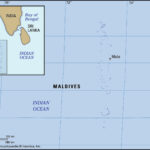The Last of the Mohicans, a captivating American action-adventure drama directed by Michael Mann, remains a cinematic masterpiece even decades after its release in 1992. Based on James Fenimore Cooper’s novel and the 1936 film adaptation, this movie, starring Daniel Day-Lewis, Madeleine Stowe, and Russell Means, grossed $143 million worldwide and is celebrated for its stunning visuals and historical depth. But beyond the compelling narrative and powerful performances, the film’s breathtaking backdrops play a crucial role in immersing viewers in the 18th-century frontier. So, for fans and film location enthusiasts alike, the burning question remains: Where Was Last Of The Mohicans Filmed?
The answer lies primarily in the beautiful state of North Carolina, USA. Michael Mann and his production team chose various locations across North Carolina to bring the world of the French and Indian War to life. The dramatic landscapes of this region perfectly mirrored the wild and untamed frontier setting required for the film. Notably, the climactic and emotionally charged final scenes of The Last of the Mohicans were filmed at the awe-inspiring Chimney Rock Park and the Hickory Nut Gorge.
Discovering the Filming Locations of The Last of the Mohicans
To pinpoint exactly where was Last of the Mohicans filmed, we can explore a detailed list of locations throughout North Carolina. These sites provided the diverse and authentic settings for the movie’s action and drama:
- Asheville: This vibrant city served as a base for production and likely provided logistical support for filming in the surrounding areas.
- Biltmore Estate: While perhaps not directly featured in prominent scenes, the area around the historic Biltmore Estate offered the production team access to varied landscapes.
- Blue Ridge Mountains & Blue Ridge Parkway: The majestic Blue Ridge Mountains and the scenic Blue Ridge Parkway provided sweeping vistas and wilderness settings crucial for establishing the film’s atmosphere.
- Bridal Veil Falls & Hooker Falls: The stunning waterfalls of North Carolina, including Bridal Veil Falls and Hooker Falls, were utilized to capture the natural beauty and rugged terrain of the frontier.
- Burke County: This county, encompassing parts of the Blue Ridge Mountains, offered diverse locations for filming various scenes, from forest landscapes to riverbanks.
- Chimney Rock State Park: As mentioned, Chimney Rock State Park was pivotal for the film’s final, unforgettable scenes. Its dramatic rock formations and panoramic views contributed immensely to the movie’s climax.
- DuPont State Recreational Forest: This expansive forest, known for its waterfalls and diverse terrain, offered numerous locations to film scenes requiring dense woodland and natural water features.
- Greenknob Overlook: This overlook likely provided vantage points for capturing wide shots of the mountainous landscapes, enhancing the sense of scale and wilderness.
- Linville Falls: Another spectacular waterfall location, Linville Falls, added to the visual richness and authenticity of the natural settings in the film.
- Manor Inn: This location might have served as a base for the crew or potentially featured as a set location for interior or exterior scenes requiring a more structured setting.
- North Cove: Located in the mountains, North Cove likely offered secluded and untouched landscapes suitable for portraying the remote frontier.
- Pisgah National Forest: A vast national forest, Pisgah provided a wide range of natural environments, from dense forests to river valleys, allowing for diverse scene settings.
- Table Rock Mountain: Similar to Chimney Rock, Table Rock Mountain with its imposing rock face, offered dramatic backdrops and potentially served as a location for visually striking scenes.
- Weaverville: Like Asheville, Weaverville likely served as a support town for the production, providing resources and accommodation for the cast and crew.
These locations, spread across the western part of North Carolina, collectively created the immersive and authentic backdrop for The Last of the Mohicans. The film effectively utilized the natural beauty and diverse landscapes of the region to transport audiences to the tumultuous era of the French and Indian War.
The Last of the Mohicans Locations: Latitude and Longitude
For those wanting to explore these iconic film locations further, here is a table with the latitude and longitude coordinates:
| Location Name | Latitude | Longitude |
|---|---|---|
| Asheville | 35.590942 | -82.572968 |
| Biltmore | 35.540539 | -82.552750 |
| Blue Ridge Mountains | 35.767223 | -82.274055 |
| Blue Ridge Pkwy | 35.883766 | -82.020058 |
| Bridal Veil Falls | 35.177254 | -82.620712 |
| Burke County | 35.753078 | -81.733566 |
| Chimney Rock State Park | 35.432865 | -82.250954 |
| DuPont State Recreational Forest | 35.190014 | -82.603859 |
| Greenknob Overlook | 35.717846 | -82.223022 |
| Hooker Falls | 35.201981 | -82.623512 |
| Linville Falls | 35.959213 | -81.943535 |
| Manor Inn | 35.608913 | -82.545448 |
| North Cove | 35.836205 | -81.991135 |
| Pisgah National Forest | 35.284367 | -82.728073 |
| Table Rock Mountain | 35.890949 | -81.882957 |
| Weaverville | 35.697796 | -82.563080 |
By exploring these locations, fans of The Last of the Mohicans can step into the world of the film and appreciate the natural beauty that served as a powerful backdrop to this unforgettable story. Knowing where was Last of the Mohicans filmed enhances the viewing experience and allows for a deeper connection with this cinematic classic.

